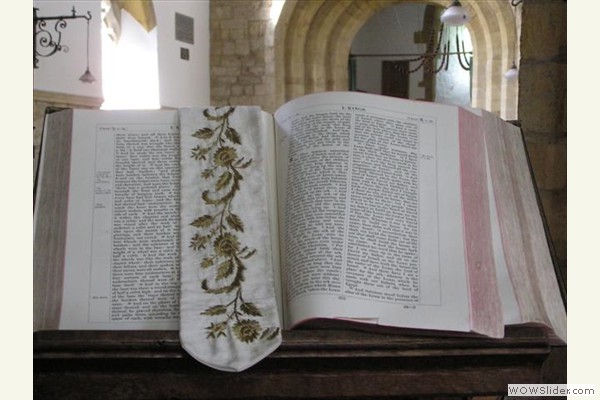
HAYDOCK CATHOLIC BIBLE COMMENTARY ON THE OLD TESTAMENT
INTRODUCTION.
The sacred writer of this Book is generally believed to be the high priest Eliachim, (called also Joachim.) The transactions herein related, most probably happened in his days, and in the reign of Manasses, after his repentance and return from captivity. It takes its name from that illustrious woman, by whose virtue and fortitude, armed with prayer, the children of Israel were preserved from the destruction threatened them by Holofernes and his great army. It finishes with her canticle of thanksgiving to God. Ch. --- He was a chief officer at court, under Ezechias, (4 K. xviii. 18. H.) before he was high priest, assuming his father Helchias's name. Many suppose that he was the author of this Book, as Josephus informs us that the priests recorded the most remarkable transactions. But this would prove that they wrote all the histories of the Bible. S. Jerom (in Agg. i. 6.) seems to believe that Judith left these memoirs. Yet we have no certain proof of the author. Josephus passes over this history, as he professed to exhibit only the Heb. books. Ant. x. 11. Prol. &c. S. Jerom doubts not but this was written in Chaldee, from which language he translated it; unless he caused it to be first explained to him in Heb. as he did the Book of Tobias. C. --- He might, however, have attained sufficient knowledge of the former language, which is so like the Hebrew, before he undertook this work. H. --- He professes to give "the sense," rather than a verbal translation. The Greek must have been taken from another copy, and is followed by the Syriac, in which we find some passages more exact than in the present Greek copies. The original is entirely lost. It might have removed many difficulties. Those however which are started by our adversaries, are not unanswerable. Grotius would suppose that this work is only a parable, representing the state of the Jewish church under the persecution of Epiphanes. But this singular notion has no foundation; and if it had, the authenticity of the Book would not be endangered, as the parable both of the Old and New Testament are certainly true, and written by inspiration. C. --- Luther styles it a poetical comedy; (Pref. et Sympos. 29.) but both Jews and Christians have esteemed it as a true history: (W.) and this innovator (H.) allows, that "the Book is beautiful, and written by an inspired prophet." C. --- The Fathers have looked upon it with the utmost veneration; and S. Jerom, though he was at one time under some doubts, placed it on a level with the Books of Ruth, and Esther, &c. Ep. ad Principiam. --- It is admitted by Origen, Tertullian, S. Chrys. S. Hilary, V. Bede, &c. as the history of a most valiant matron, delivering God's people from a cruel tyrant. W. --- Some place this event under Cambyses, son of Cyrus; (Euseb. S. Aug.) others under Xerxex, (Torniel) or Darius Hystaspes, (E.) or Ochus: (Sulp. Severus) but the opinion which has been given above is more accurate; (C.) or rather Bethulia was saved, while Manasses was in captivity, (in the 10th year of his reign) and the high priest administered affairs in his absence. At this point, Judith might be thirty-five years old. She lived seventy years afterwards; and many days (perhaps eight years more) passed before the country was invaded by Pharao Nechao. C. xvi. 30. Thus Manasses survived 45 years, Amon 2, Josias 31; total 78. This chronology removes every difficulty. Houbig. Pref. --- If true, it seems probable that the work would be originally in Heb. as the Chaldee was used only after the captivity, (H.) which may be farther proved from C. i. 15. Greek. Houbigant. --- Protestants prefer to translate this and the other apocrypha from the Greek. M.
Copyright ©1999-2023 Wildfire Fellowship, Inc all rights reserved

 Keep Site Running
Keep Site Running